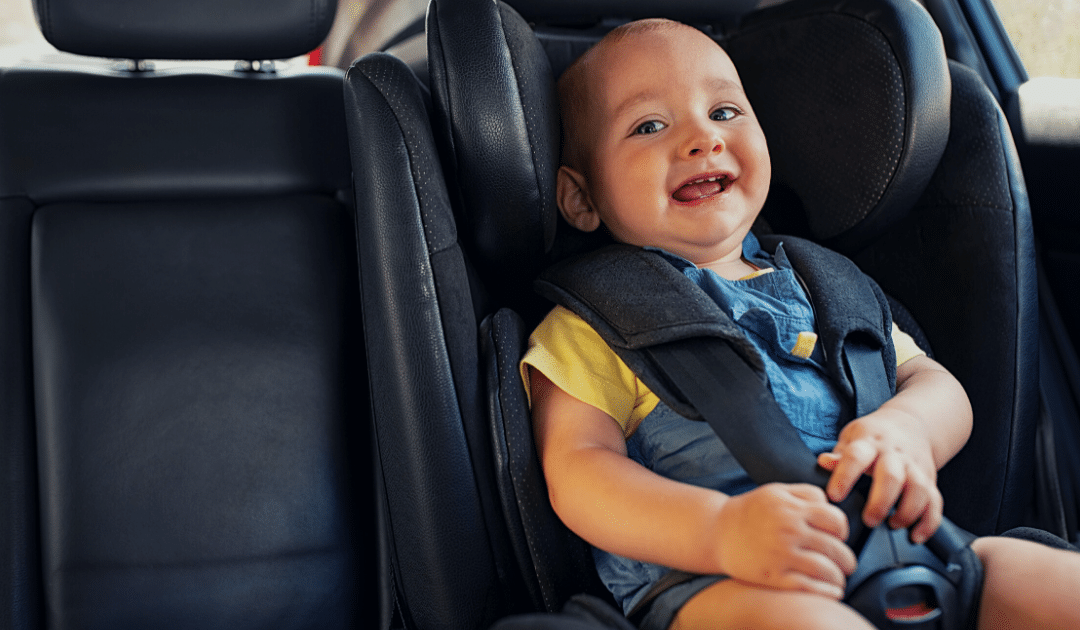Booster seats were designed for that critical time when a child has outgrown their car seat but isn’t yet tall or heavy enough to be safe in a seat belt alone.
Here’s a primer on the different booster types, tips for buying and installing one, and help on determining when it’s safe to transition your child out of the booster for good.
Booster Seat Types
There are 4 types of boosters, differentiated by your child’s needs and also your preferred functionality.
Backless Booster Seat – Boosts the child’s height so that the seat belt fits properly. Best for cars that have headrests.
Booster Seat with High Back – Like the first seat type, this raises the child’s height so as to ensure a proper seat belt fit, but it provides neck and head support.
Combination Seat – Accommodates a child’s growth by transitioning from a forward-facing seat with a harness into a booster.
All-in-One Seat – Like the combination seat, this one transitions as well, but goes from rear-facing seat, to forward-facing, and finally to a booster.
Whatever style you choose, make sure the seat has a guide for your car’s shoulder belt, so that it lies across their torso correctly. Also, make sure the guide allows the belt to retract easily. Some seats have clips, wings, and even adjustable bases, all of which further tailor to your child’s height/weight and the specifics of your vehicle.
Learn more about seat types at the National Highway Traffic Safety Administration’s (NHTSA) page.
Tips on Buying and Installing
Buying a booster seat
- Always buy new, as used seats may not fit your child correctly or could even be unsafe.
- If your child weighs less than 40 lbs, a combination seat may be your best bet.
- Avoid seats with a reclining feature as they can put your child at an increased risk of injury in an accident.
Installing the seat
- Like car seats, boosters should only be installed in the back seat.
- The safest spot is in the center of the rear seat — which best protects against side-impact crashes — but only if your vehicle has a lap and shoulder belt in the center. If there’s only a lap belt, put the seat on the passenger side so you can better see your child from the driver’s seat.
- If using a combination seat, use the anchoring system. This is called the LATCH system, short for Lower Anchors and Tethers for Children.
- Use the seat’s belt-positioning clips if it came with them. They ensure that the belt crosses your child’s chest correctly.
- Check out these videos by the NHTSA for instructions on properly installing high-back boosters, backless boosters, combination boosters, and all-in-one boosters.
A Checklist: When Can They Graduate Out of a Booster?
According to the NHTSA, more than 25% of kids aged 4 to 7 are transitioned out of a booster seat too soon. The organization recommends that children continue using a booster until they’re at least 4 feet 9 inches tall AND 8 to 12 years old. They should also have outgrown the seat manufacturer’s weight and height recommendations.
If you can answer “yes” to all of the below when your child is sitting on the vehicle seat, then they can move from a booster to seat belts only.
- Is their back flat against the seat back?
- Do their knees comfortably bend at the seat’s edge?
- Does the shoulder belt lie between their neck and shoulder?
- Does the lap belt lie against their hip bones/tops of thighs?
- Can they remain comfortable for the whole trip? (i.e. without fidgeting, sliding, or pushing the belt out of position)
We know that boosters can be a hassle and that you’re probably fielding the “Do I still have to use the booster seat?” question a few times a week — but hang in there! Graduating your child when they’re actually ready to leave the booster is much safer for your precious cargo — and may be closer than you think.
Booster seats? Check. Need tips on car seats? Check out our blog post here.
This article is furnished by California Casualty, providing auto and home insurance to educators, law enforcement officers, firefighters, and nurses. Get a quote at 1.866.704.8614 or www.calcas.com.
- Graduation – When to Remove Your Child from Your Auto Policy - May 18, 2023
- How to Prevent Catalytic Converter Theft - May 17, 2023
- How Much Does Home Insurance Cost? - May 17, 2023

